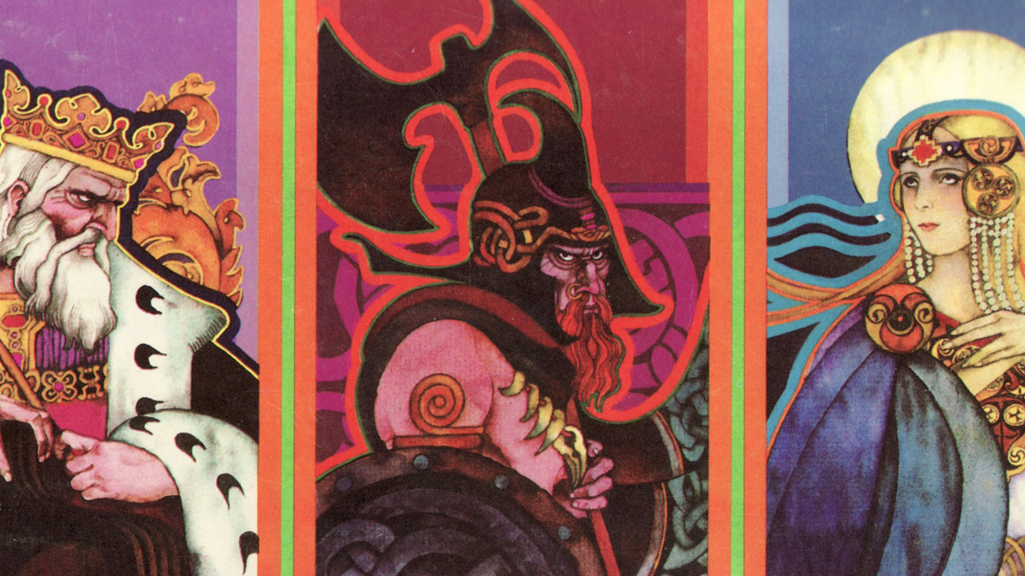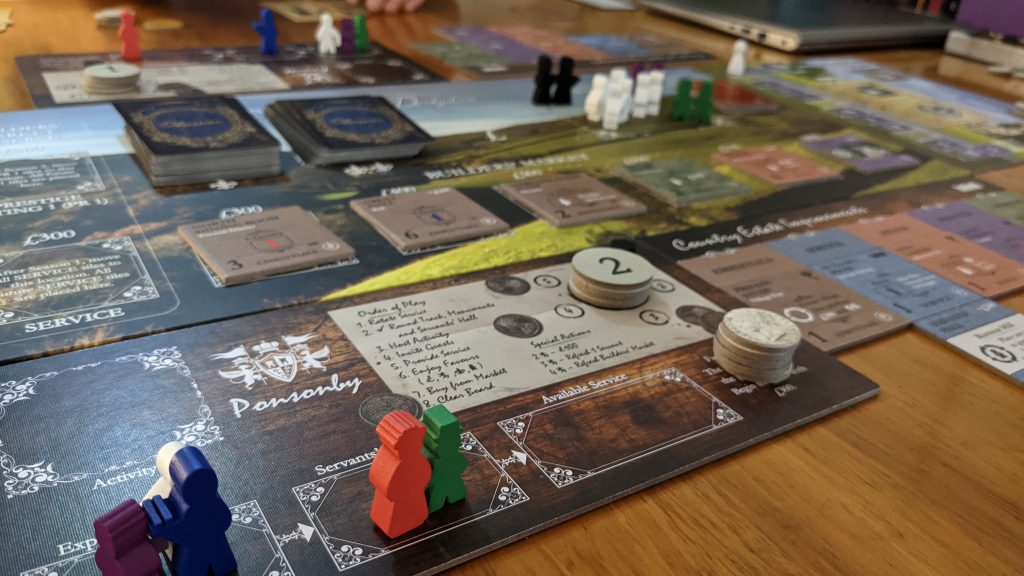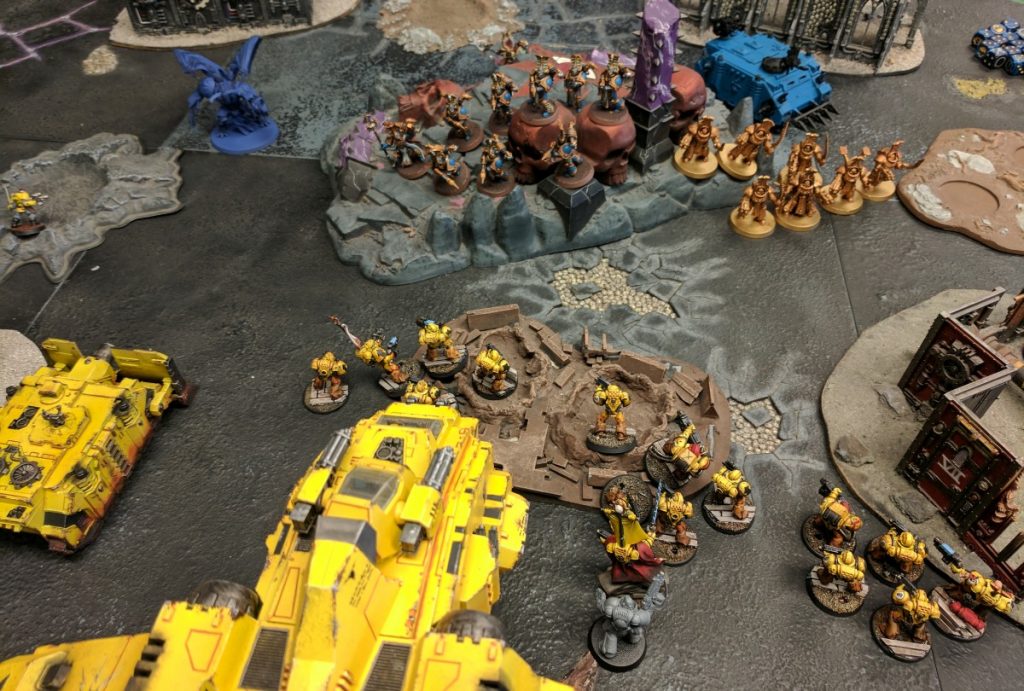Pip: After writing about my infatuation with Exploration as an artefact from another time in board gaming (and reading through your equivalents!) I found out about Restoration Games – a project to dig out and polish up older games in order to give them a new audience. Their tagline is cute: “Because every game deserves another turn.”
Restoration Games is actually a trio right now: attorney, Justin Jacobson; designer, Rob Daviau (of Risk Legacy and Pandemic Legacy fame); and graphic designer, Jason Taylor. They’ve also just announced their initial slate of games to restore – Dragonmaster, Top Race and Stop Thief! I caught up with Justin Jacobson to find out more about the project – particularly what “restoration” even means when it comes to board games and why these three made the cut…
Justin, as I mentioned above, is an attorney. He’s based in South Florida and had the kind of family I definitely didn’t – one which was into board games. “My father and uncle were always regular game players, and we lived nearby growing up,” he says. “So, unsurprisingly, my cousins and I played games constantly. We played a lot of D&D and a lot of video games, but mostly we played board games. Tons of them. All kinds. I guess I’ve always been around games and so I’ve always had a passion for them.”
The Restoration Games project has roots in that passion, then, but it’s specific form resulted from a combination of events including a GenCon seminar:
“Let’s start with thread one,” Jacobson says. “About five years ago, Rob Daviau’s wife attended a legal seminar I gave at Gen Con. Rob was getting ready to leave Hasbro and wanted some help with some legal matters. Yes, you can thank me for Pandemic Legacy. (Well, maybe 1% of it.) Since then, I’ve helped Rob with a number of different legal issues, mostly involving reading contracts…

“Then we have thread two: Back in the halcyon days of D&D Third Edition, I dipped my toe in the publishing waters. I published a number of supplements, but I always wanted to do a licensed game from a big property. This culminated in 2006 with Passages, a standalone game that was basically League of Extraordinary Gentlemen. But I’ve always kept an eye out for a licensed game.
“Then, about a year ago, I had a great idea: What if I took a grail game, filed the serial numbers off, and re-released it for a new generation. I figured I should think big, and one of the biggest grail games of all time is Star Wars: The Queen’s Gambit. Wait. What’s that? Rob was a co-designer on Queen’s Gambit? So we got to talking, and one thing led to another….”
He pre-empts my next question by adding, “And, no, we are not doing Queen’s Gambit”!
What they ARE doing is as follows. First up is Indulgence; a restoration of the 1981 trick-taking game, Dragonmaster, which was itself based on Coup d’Etat. The new name points towards the new theme being brought into play (pun intended) where you need to navigate the tricky world of papal edicts. “The key features of this game were the variable hand contracts, the ‘power plays’, and the amazing art by Bob Pepper. We decided to retheme this game because the theme was not central to the key features, and we believe generic fantasy is a little stale at this point,” says Jacobson.

Instead you’ll find yourself trying not to fall foul of papal edicts or, if you must sin, making use of indulgences:
“In Indulgence, the four suits are four of the powerful families of the Italian Renaissance,” explains Jacobson. “The papacy is represented by a deck of edict cards that mandate a rule for that hand, e.g., ‘Don’t take any Borgias.’ If you violate the edict, you pay the dealer. But, you can decide to violate the edict, i.e., “Take all the Borgias”. If you succeed, you get richly rewarded, but if you fail, you are severely punished.
“Of course, when you intend to sin, an indulgence helps. Indulgences were granted by the Church to forgive someone of their venial sins without punishment. In the game, the indulgence can turn any card you play into sort-of a trump card to help you win the trick. For the art, we have hired an amazing young artist, Chelsea Harper, who is doing individual portraits for each card. It’s going to look amazing.”
Sidenote: indulgences are fascinating if you’re interested in the history of the Catholic church, particularly how their increased abuse came to form a kind of marketplace of pardons where you could buy your way out of a whole range of spiritual punishment in the later Middle Ages.
The second game up for restoration is Top Race, which they’re restyling as Downforce.
“1996 was a pretty great year for Wolfgang Kramer,” says Jacobson. “Not only did he win the Spiel des Jahres for El Grande, but another one of his games was recommended that same year. That game was Top Race.
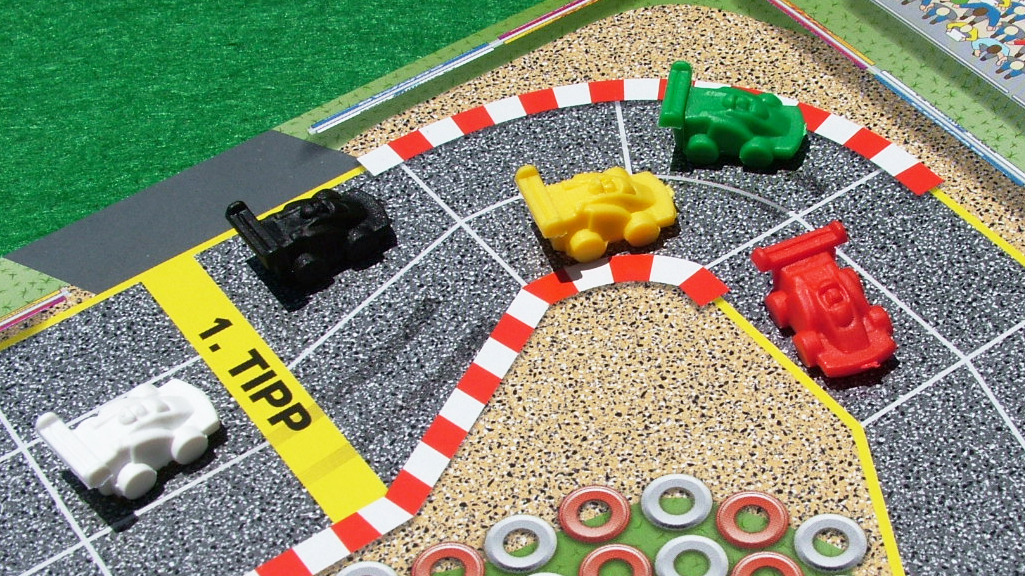
“The origins of this game stretch back to his very first published game, Tempo. In the intervening years, it saw print under a bunch of names and licenses, including Daytona 500, published by Milton Bradley in 1990. Given its pedigree, our restoration didn’t focus much on game play. We did add some variable player powers and cherry-picked from all the variants available over all the versions. This game is so much fun. But mostly, we wanted to pay attention to the components, materials, and graphic design to make it super-spiffy. Among other things, NO PAPER MONEY.”
The last game for the moment is Stop Thief.
“This game was designed by honest-to-goodness rocket scientist, Dr. Robert Doyle, and published by Parker Brothers in 1979,” explains Jacobson. “He’s the grandfather of these hybrid electronic-board games we are seeing so much of today, like Mansions of Madness, XCOM, etc. Given the development of handheld devices, it was a natural fit for us.
“Unsurprisingly, we’re reimplementing the electronic component as a free companion app. This flexibility also allows us to do different modes and levels of play. We also gave the basic gameplay a good polish, replacing the roll-and-move with asymmetrical movement decks. And, of course, NO PAPER MONEY.”
So Daviau, Taylor and Jacobson make up the core Restoration trio who are focusing on those first titles. The intention is to launch all three at GenCon in August 2017. Asdruval Cifuentes, the Retro Board Gamer from the Dice Tower Network, is doing some video work for the project, there’s also a consultant they’re looking to bring into the fold, and they’re on the lookout for someone on the development and logistics front for 2017. Jacobson tells me they’re specifically looking for a woman or person of colour. “We believe that diversity in game publishing is important. So, if you’re reading this and that’s in your wheelhouse, keep an eye out for an announcement probably around GenCon.”
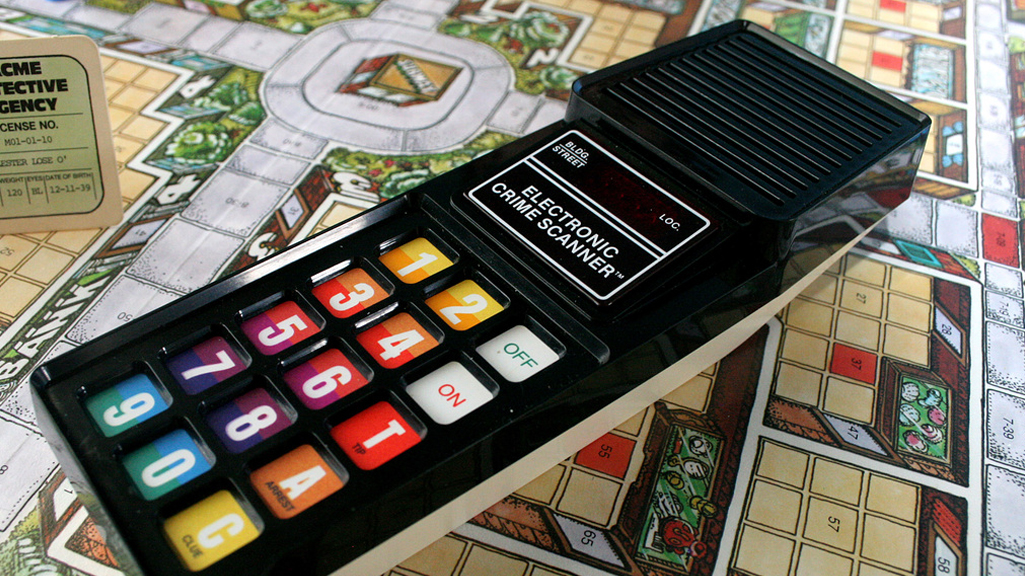
Prior to the announcement of which games the team would tackle first, I filled in a survey on the Restoration Games site which listed some of the games being considered at that point. They ranged from the aforementioned trick-taking of Dragonmaster to American football data charts in Paydirt, and from the treasure exploration of Mystery Mansion to Thunder Road’s car racing. There were actually far more games under consideration than were mentioned on the site but the survey was aiming to represent a spread of genres as well as particular games.
“We tried to have a game or two for a number of different genres, themes, weights, etc,” says Jacobson. “We wanted to get an idea of what there was a demand for. Did people really want us to bring back five-hour brain-burners with hundreds of chits? (Sadly, no.) Kids’ games? Electronics? Card games? We picked some games that we were pretty sure people had heard of before and some that were pretty obscure. Basically, we wanted as broad a canvas as possible.”
The most interesting thing to me in this project is what “restoration” means. As part of the survey the question comes up of whether you’d want updates to the game’s look, updates to the mechanics, both, neither, tweaks but no great overhaul…? The question is asked to get a general feel for what the audience thinks, I’d say, as it comes before any specific games are mentioned. But as you might guess, the restorative touches will end up being tailored to each game the team works on.
“There are a number of different forms that a ‘restoration’ can take,” Jacobson says. “Some games were great in their day but have just fallen to the mists of time and need a facelift. Some had one really neat bit that got buried beneath a mountain of crap. Some games were ruined by roll-and-move because that’s all we knew back then. Our approach was simple: Find the ‘soul’ of the game, strip everything else away, and build a great game around it.”
That’s how the team see the project – if I had to describe it, I’d say it was maybe a kind of design archaeology or perhaps design-based mining and refining. Something along those lines. The actual survey responses indicate the audience for these games isn’t pushing strongly in one direction or another either (not without knowing the specifics, anyway).
“About a quarter said update the look but keep the mechanics. A quarter said update the mechanics but keep the look. And half said overhaul. Which tells us that, yes, it depends on the game and that the most important thing is to make a great game. Only a very small percentage were looking for a straight reprint, which is good because that didn’t interest us anyway.”
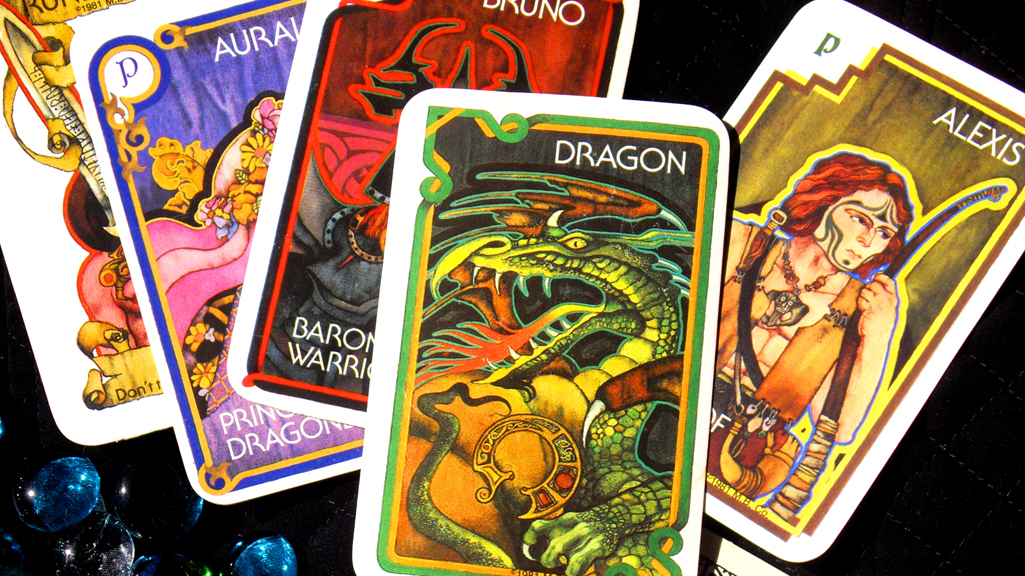
But the thing with these games is that, because of the very nature of the project, the vast majority are pre-existing works with existing rights holders. As the one on the team with the law background I feel like this might be where Jacobson’s expertise can really come to the fore.
“Indeed!” he agrees. ” I’m an award-winning game designer too, but that’s what I really bring to the table. (No, really, I won the 2004 About.com Shared Pieces Game Design Competition.) As recent legal decisions have highlighted, there are limits on what can be protected in terms of game mechanics.
“But, from the get-go, Rob and I were adamant that we would not merely do what we had to do legally but what we thought was the right thing to do ethically. This starts with us reaching out to the original designer or publisher where appropriate. In some cases, we have a formal license. In other cases, based on the rights status and the direction we want to take the restoration, it’s not appropriate. Each game is handled on a case-by-case basis.”
So have any designers approached the team to request a kind of rescue mission for their own out-of-print games?
“Not yet, but we’re hoping that happens in due time as we build up our reputation. We are actively looking for “guestorations”, so please reach out to us if you want to talk about the possibility. One of our initial offerings is from one of the all-time great designers. But we approached him, so that doesn’t count.”

Something which occurred to me when looking at the list of potential games in the survey is that they tend to hover around the average mark in terms of their rating on places like BoardGameGeek. Some may have disappeared for odd or complex reasons, but many others will have faded away – out of print for lack of interest or because there’s now more out there that’s that little bit more compelling. I can’t help wondering whether the team are worried about those fates repeating themselves. How do you approach the idea of offering up a game when it’s already been shown to have a limited lifespan for whatever reason? Is that a concern?
“Perhaps on some level,” Jacobson replies.”On the other hand, these are all games that have succeeded at some point. Game publishing was very different in the 60s, 70s, and 80s. With few notable exceptions, there weren’t many evergreen titles. Also, we get a second chance to make the game really sing. Based on what we’ve got done so far, I’m quite confident these games will succeed in today’s market.”
Relatedly, I’m interested in the role nostalgia plays in this project, or in galvanising potential buyers of these games. Jacobson acknowledges it might be a factor but adds, “I’m hesitant to say it’s much of it.”
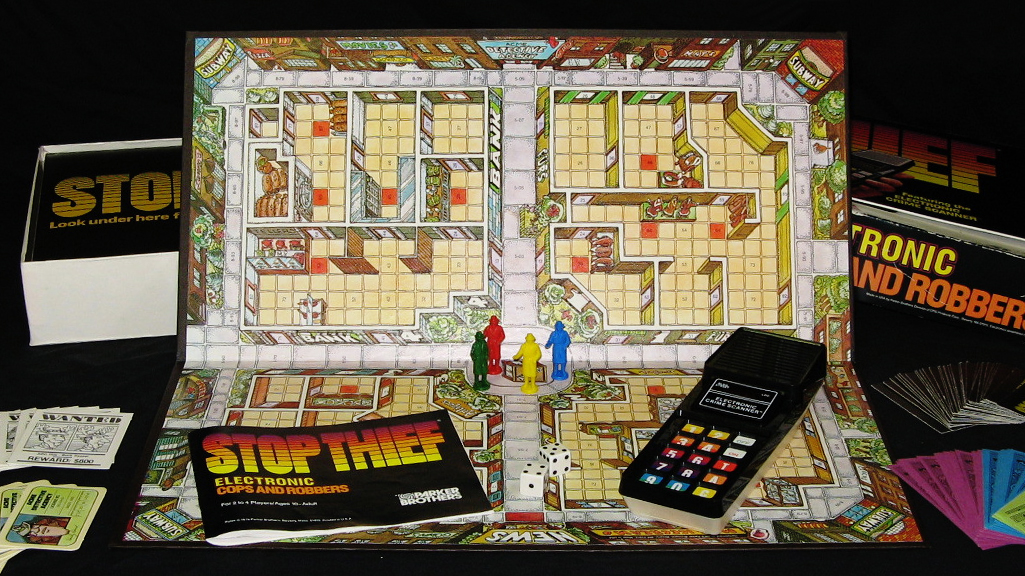
He continues, “For some people, who remember the game fondly, it will be a big driver. And we’re hopeful those people will become evangelists for us, selling others on the game. But that fact is, most of the people we’ll be selling to have never played these games—never even heard of them. For them, it’s not technically nostalgia. I think it qualifies more as “retro”, which is basically nostalgia without the sentiment, right? It evokes a longing for the spirit of a bygone era more than the times themselves. To me, this is one of the most fascinating parts of this adventure. I think I could write a book on it. Hmmm….”
As a data nerd, I can’t resist digging into what other information the Restoration Games survey might have uncovered. Maybe there’s something to be said about the types of games people gravitate towards or the mechanics which provoke strong attachments. I find myself wondering how accurate people’s memories of these games even are given decades may have passed since their last play session.
“For starters, I’m amazed at just how many games there are that people care about,”says Jacobson. “It’s been fun looking at all these games. Sometimes, the charm is apparent. Other times, I’m scratching my head. Some of the suggestions from the survey come with a little commentary along the lines of ‘I know this isn’t a great game, but I had so much fun playing it.’ Or, ‘This one just needs a little love.’
“We’ve gotten suggestions for more than 500 games, from A La Carte to Zoff In Buffalo. That highlights one of the interesting things about what people are asking for. A la Carte got a second edition in 2010. We’ve gotten more than a few suggestions for games that have been reprinted already—even suggestions for Scrabble, Stratego, and the like. I’m not sure exactly what’s going on there—maybe that they’re still looking for the ‘perfect’ version of that game? And, yes, I had to look up Zoff In Buffalo. German, natch. Looks fun.”
The point about Scrabble and Stratego is one I’ve been pondering myself. When first reading about the project my kneejerk reaction was actually to suggest Mouse Trap. My reasoning for the impulse is that as a child I was so enraptured by the idea of that game, constructing this intricate Rube Goldberg machine and setting it off in a moment of ridiculously convoluted triumph. In fact, I was so enraptured that I don’t think I ever quite acquiesced to the game itself being clunky and rubbish. The roll-and-move bit was boring and the trap hardly ever worked like it was supposed to. Friends of mine had a copy and I’d beg to play it because I’d seen the adverts and had this idealised picture of it in my head but they would refuse, bemused at my enthusiasm having learned themselves already that boredom lay ahead. If there ever was a game I wished could fulfil the potential it seemed to have when I was a kid, Mouse Trap would be it.
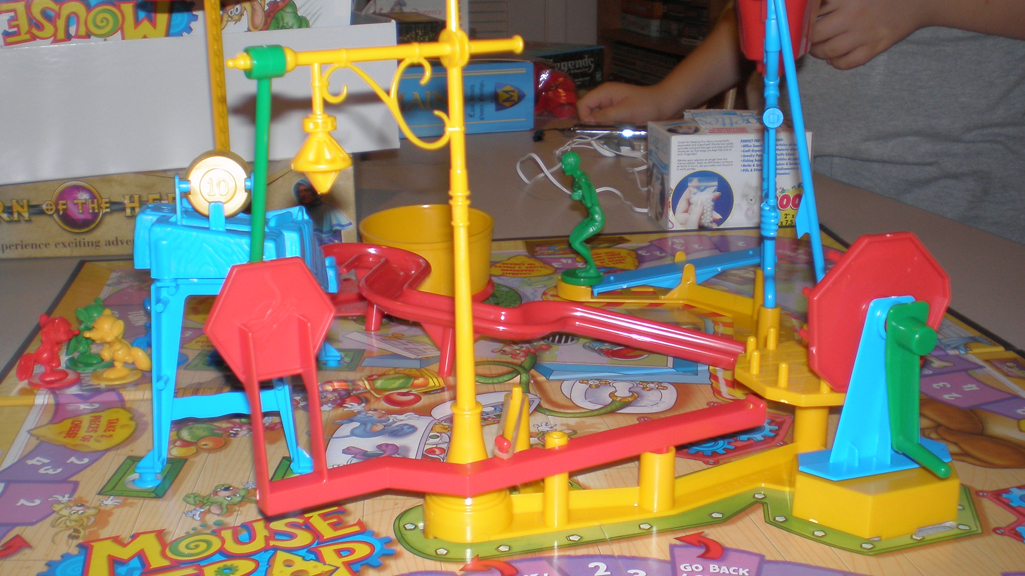
At the point we started emailing about the project, the first slate of games for the team’s restorative touch hadn’t been officially announced, but the trio were making progress towards doing so. “We’ve got our first three games in the pipeline as we speak,” Jacobson told me. “Design is largely done, and the production process is just underway. We’re getting art and firming up manufacturing. Our plan is to release all three at Gen Con in 2017. Using a naming convention we’ve unabashedly stolen from Eric Lang, we’re calling these PROJECT AUDIOSLAVE, PROJECT DOWNFORCE, and PROJECT INDULGENCE. We will also be at Dice Tower Con in July, and there’s a chance we’ll have either advance copies or at least demos there.
He ends with an enormous tease:
“We’ve also decided on our next big release after that—no, really, it’s huge!—but it’s too early to even think about a release date. And we’re in ongoing discussions regarding a few more games that we can’t announce until they’re firmed up. One of them is my pet project, a game I played the hell out of as a kid. Not a great game by today’s standards. But there’s a great game hiding in there. An amazing game, just waiting to be uncovered. And, in the end, that’s what we’re all about.”

